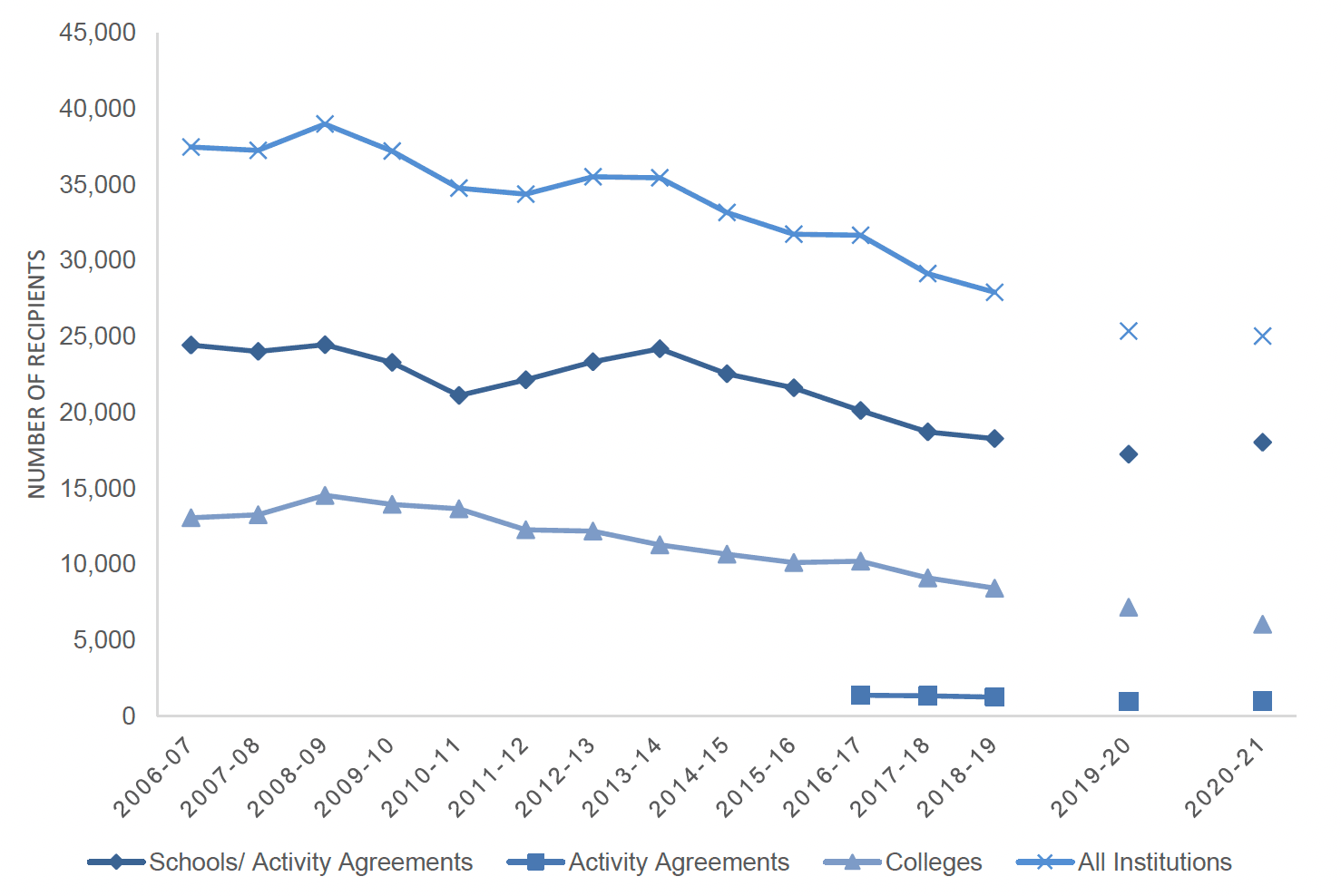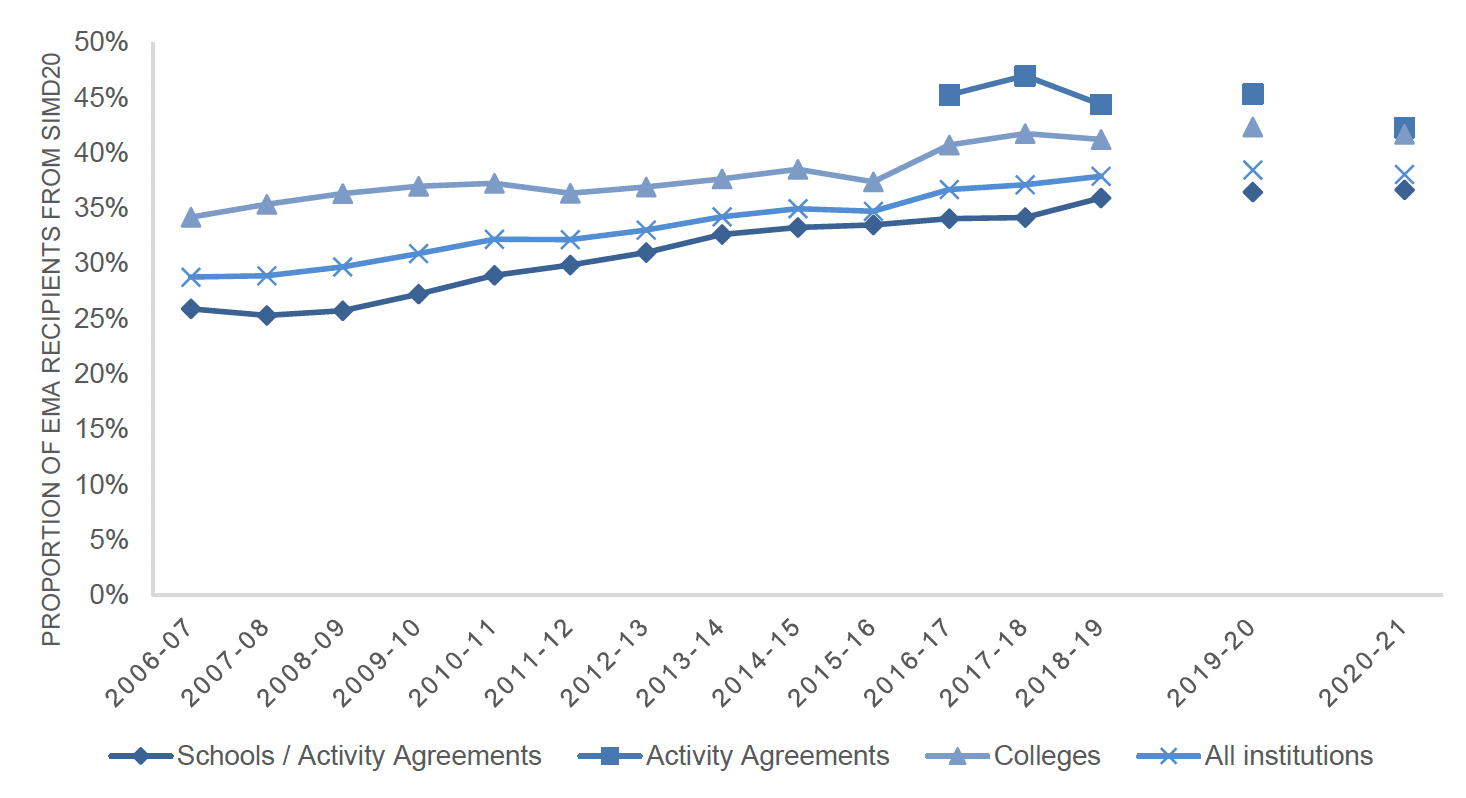Education Maintenance Allowances: 2020-21
Statistics on Education Maintenance Allowance (EMA) recipients and payments made in 2020-2021.
This document is part of a collection
3. EMA recipients
Types of EMA
For a young person to receive EMA support they must first meet all the eligibility criteria. This includes meeting residency criteria; having a household income under the EMA income threshold; be of an eligible age, and be taking part in an eligible course of learning.
Total numbers
In 2020-21 there were 25,030 young people who received EMA payments. Figure 1 shows how the number of recipients, by institution type, has changed over time.

Note: it is not possible to differentiate between the number of recipients from schools or activity agreements prior to 2016-17.
Due to COVID, the 2019-20 is a break in the series and should not be compared.
In 2020-21, 72% of EMA recipients were school pupils, 24% were college students and the remaining 4% were young people on activity agreements.
It is estimated that, around 15.2% of all Scottish young people aged 16-18 were in receipt of EMA in 2020-21. The proportion as been decreasing since 2016-17, when it was around 18.7% of the 16-18 population.
Gender
Historically more females than males have claimed EMA. In 2020-21, 52% of overall EMA recipients were female and 48% were male. For schools, 53% of recipients were female, while for colleges 51% of recipients were female.
Age
In 2020-21, 64% of EMA recipients were 16 years and under and 34% were 17 years old. Only 2% of recipients were aged 18 years and over.
Young people cannot receive EMA until they reach 16 years of age. However, as the analysis is based on age as at 30th September of the academic year, some recipients are recorded as being 15 years old.
There has been a notable drop in recipients aged 18 and over at college in recent years, from almost 1,970 in 2016-17 to 265 in 2020-21, as colleges moved from providing EMA payments to bursaries for eligible 18-year old college students.
Deprivation
Deprivation is measured using the Scottish Index of Multiple Deprivation (SIMD).
38% of EMA recipients were from the 20% most deprived areas in 2020-21.

Note: it is not possible to differentiate between the number of recipients from schools or activity agreements prior to 2016-17.
Due to COVID-19, the 2019-20 is a break in the series and should not be compared.
Figure 2 shows the proportion of recipients from the 20% most deprived areas over time, and shows an increase for all types of EMA over the year for all institution types.
This proportion has typically been higher for college (42% in 2020-21) than for school (37%) students. This is partly explained by the higher proportion of students at Scotland's colleges from deprived areas.
Contact
Email: FHEstatistics@gov.scot
There is a problem
Thanks for your feedback